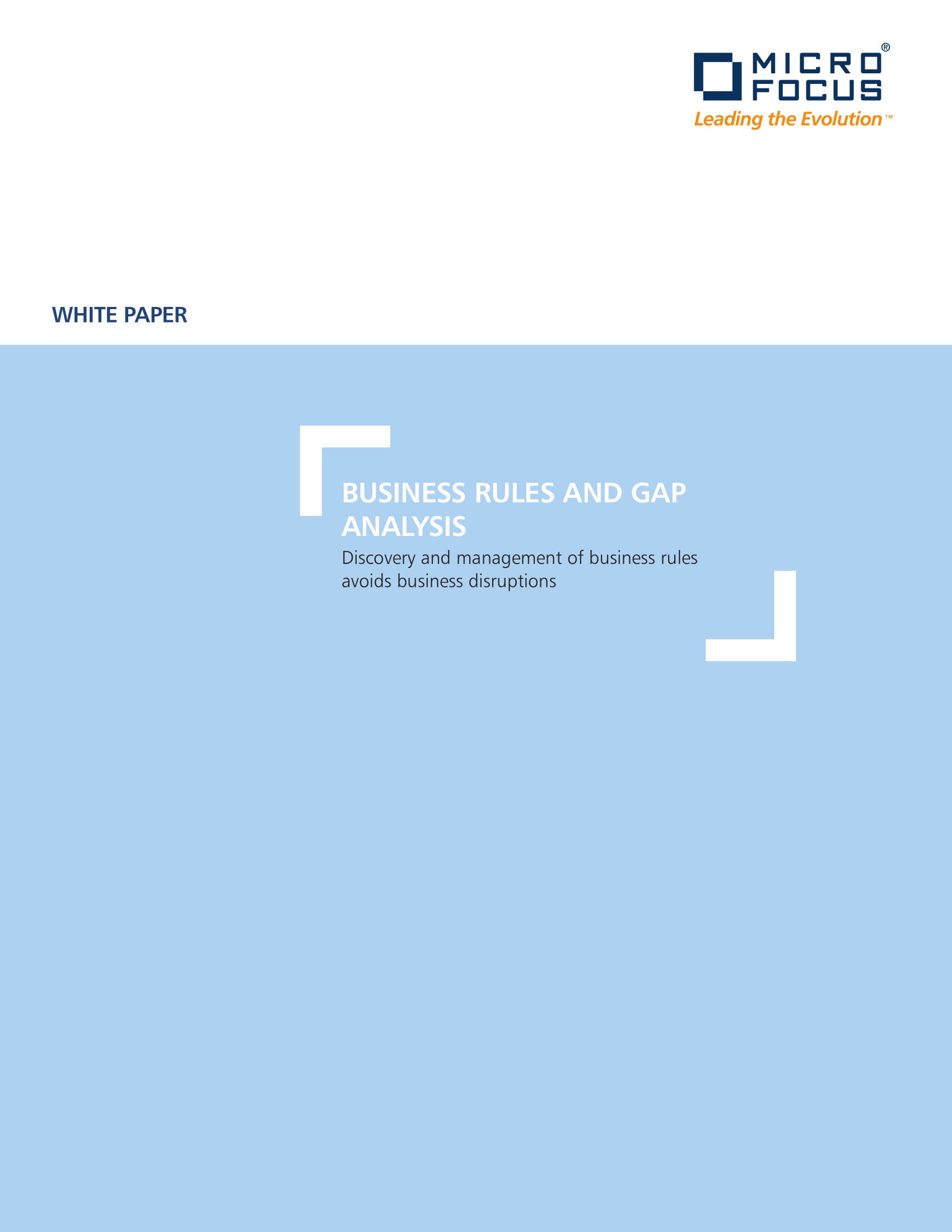12+ Software Gap Analysis Examples to Download
We all know that software development is an ever evolving field with a ton of surprises. You create a system with so many expectations, but along the way, you find yourself wondering whether all the time and energy spent developing the software has constituted to any amount of progress from when you first started. Unfortunately, things won’t always go as planned. The space between where you are and where you want to be prevents you from accomplishing your end goal.
When this happens, a gap analysis must be performed. A gap analysis is an analytical and strategical process used to point out the missing links (gaps) in a particular document or procedure once both the current and future states have been identified. This way, you can proactively monitor and improve your corporate strategies, business models, policies, or systems to keep you on the right track.
So in this article, let’s take a closer look into what a gap analysis is and how it is used in the area of software development.
Gap Analysis Template
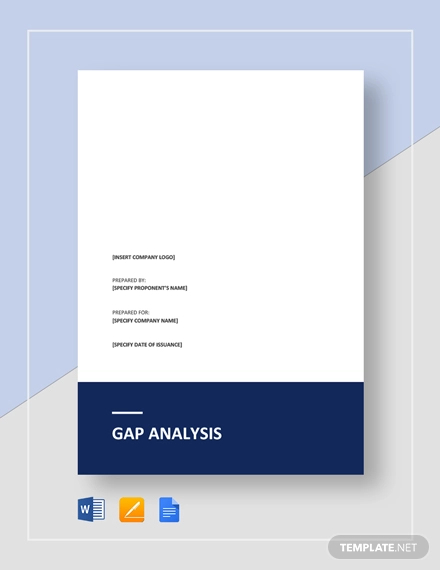
Blank Gap Analysis Template
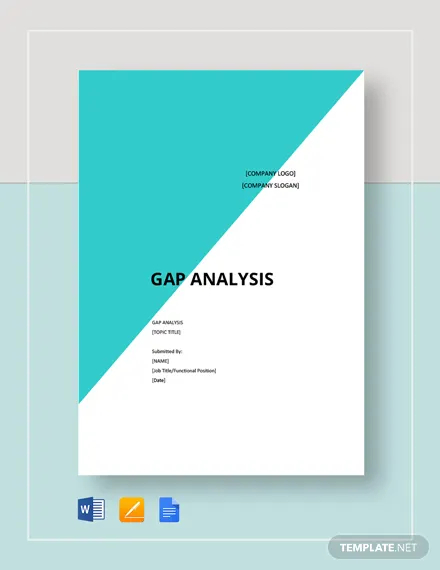
Free Gap Analysis Template
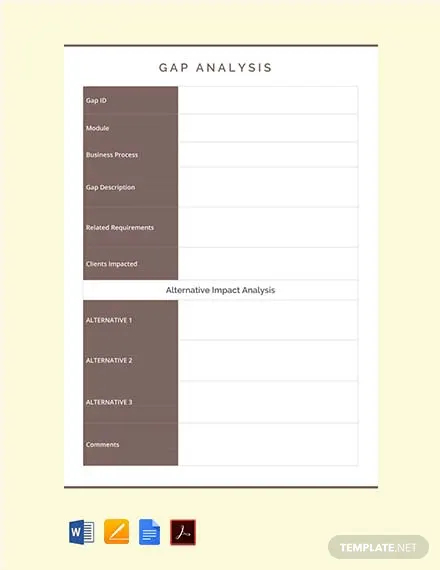
Business Software Gap Analysis Example
Software Data Gap Analysis Example
Software Gap Analysis Example
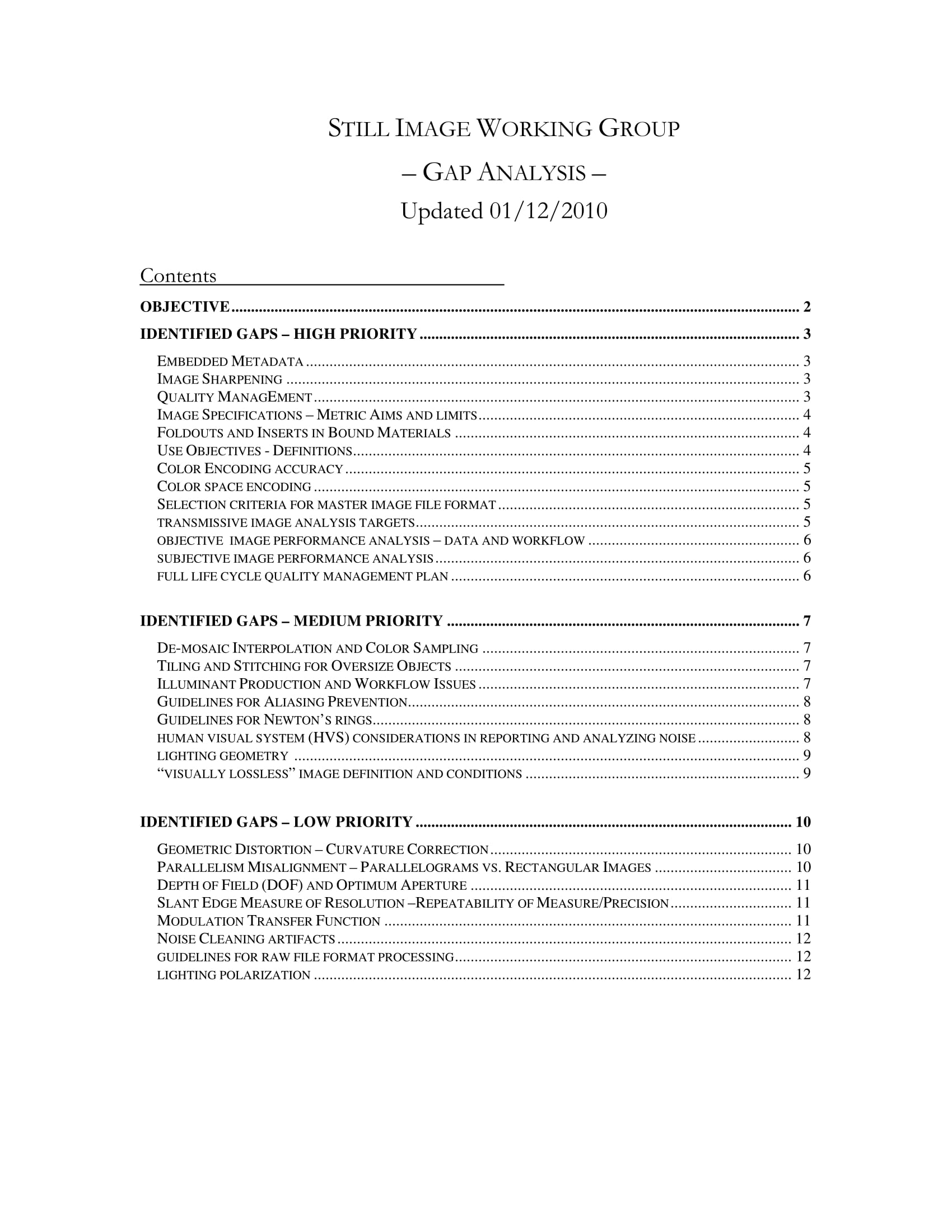 digitizationguidelines.gov
digitizationguidelines.govWhat Is Gap Analysis?
A gap analysis, which is also known as a needs analysis, needs assessment, or need-gap analysis, refers to a method of examining the differences in performance between an information system or software application of a business in order to identify whether or not the necessary requirements have been met. Otherwise, the analysis team must determine what steps should be taken to make sure they are met successfully. From the word gap, this method points to the space between where the business is and where it wants to be.
Although a gap analysis can be used in many branches, most especially in sales and customer service, this technique can be extremely useful in other industries as well.
Let’s take the field of software development as an example. Here, gap analysis tools are often utilized to document which services and/or functions have been left out by accident, those that have been eliminated deliberately, along with what still needs to be developed. To put it simply, a gap analysis is essential in defining the difference between what is needed and what is available. Conducting the analysis requires a good amount of data on expected standards and benchmarks along with current reports on the company’s statistics and outputs.
In turn, this provides a foundation for measuring one’s investment in terms of time, money, and human resources. Without such, it would be impossible for the business to obtain a desirable outcome.
Benefits
Gap analysis can also be used in a variety of situations, depending on the different aspects of the problem that need to be explored. In addition to software development, a gap analysis can be applied in the fields of information technology, business and economics, service design, and many more. Business leaders who hope to make concrete plans months and years into the future can greatly benefit from this technique. While looking for areas of improvement doesn’t exactly mean any new enhancement, finding the existing gap between what is expected and what is really done is enough to give leaders something to look into before the said gap expands.
Software Gap Analysis for Digital Preservation Example
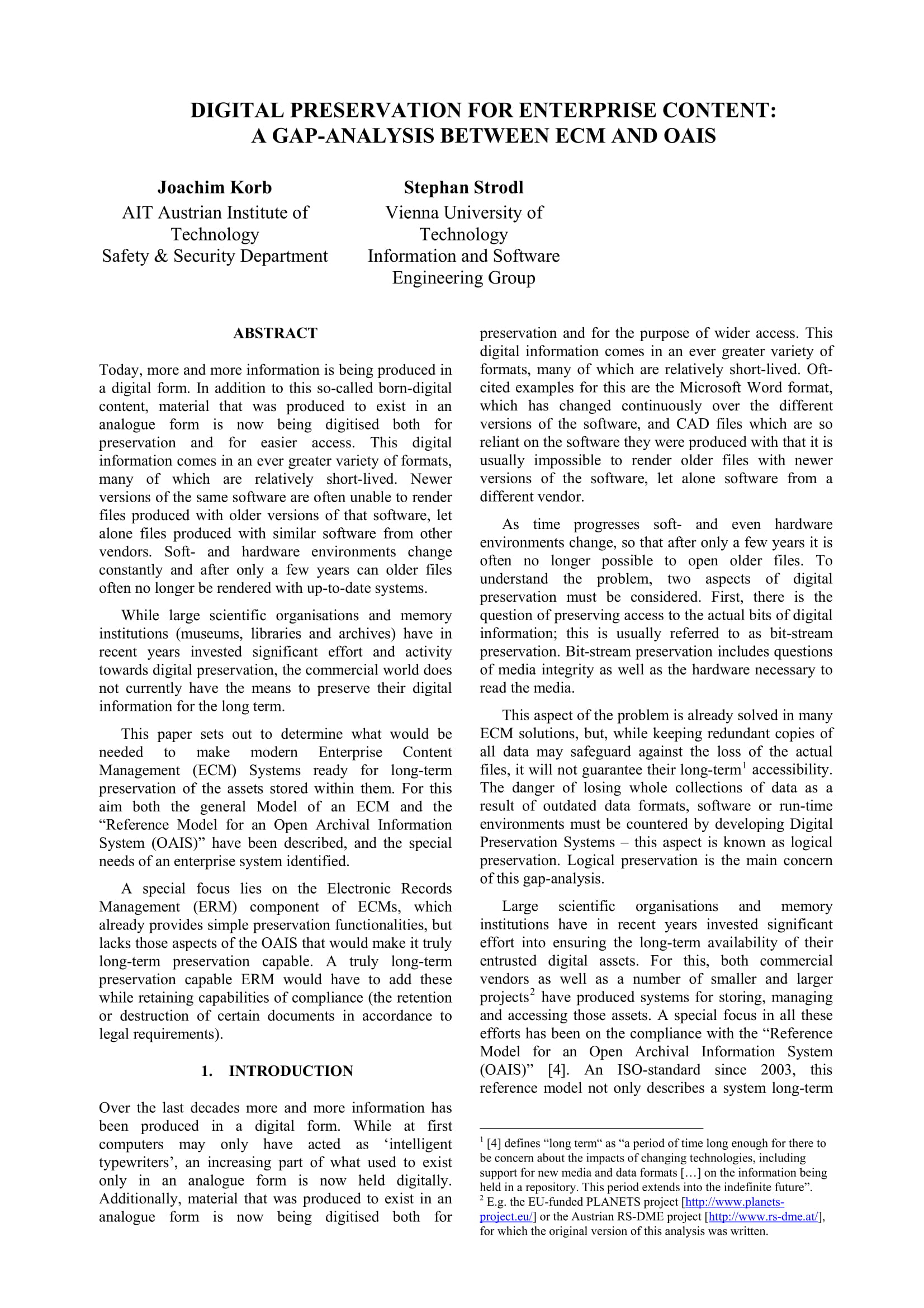 publik.tuwien.ac.at
publik.tuwien.ac.atSoftware Gap Analysis Report Example
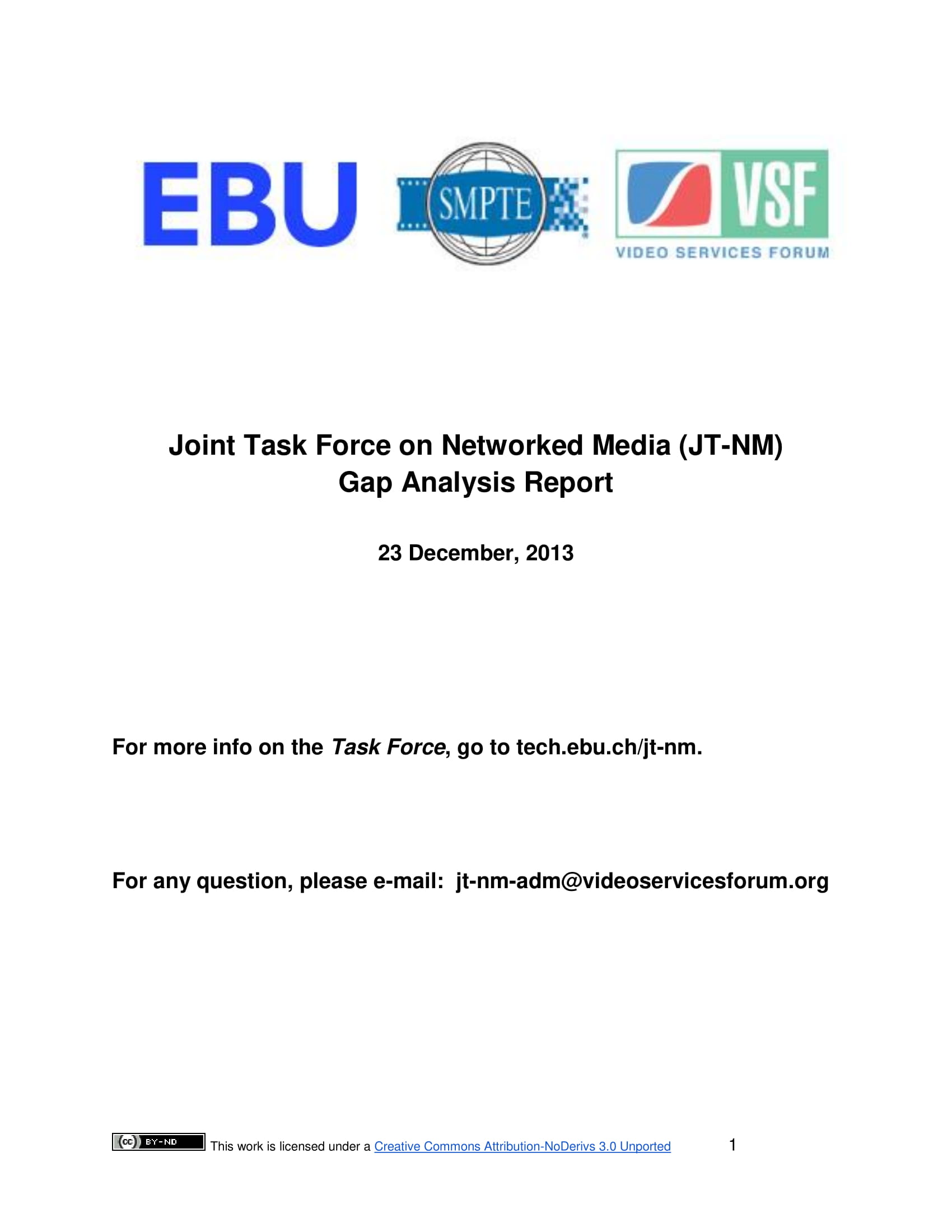 tech.ebu.ch
tech.ebu.chGap Analysis Tools
Had so many plans at the beginning of the year, only to find yourself slacking off at some point? How far have you come from the work you planned to do at the beginning of the year to where you are now?
Oftentimes, it can be difficult to assess what worked for you and what didn’t in terms of your actual performance within a given time period. But by conducting a gap analysis, you can find solutions to the issues that are hindering you from growing as a business. This could either be done on a strategical level, which involves comparing the conditions of your business with that of the industry, or an operational level, which requires comparing the current state of your business performance with the state you want to be in. This is a tool that CEOs and managers can use in order to keep their company ahead of the game.
However, identifying what these gaps are is only the first step of the process. After which, you would need to look into why they exist and what you can do about them. Fortunately, there are several tools that you could use to make things easier. Listed below are a few gap analysis tools that you can employ:
1. SWOT Analysis
One way to determine where you stand within your market or industry is by identifying the strengths and weaknesses in your internal environment, as well as the threats and opportunities that revolve around your external environment. To do so, you would need to create a SWOT analysis matrix with the assistance of a team of professionals from the relevant departments. Note down the significant factors that influence your internal and external environments in your analysis diagram. This way, you can properly examine each factor and propose possible solutions to the specified problems.
2. Fish Bone Diagram
A fish bone diagram, which is also known as a cause-and-effect diagram or Ishikawa diagram, can help you pinpoint the root cause of a particular issue or effect. Here, you need to identify the 6Ms that are likely to affect the situation, namely the measurement, material, machine, mother nature, man power, and method. This will make it easier to see how each factor relates to the central problem.
3. McKinsey 7S
Similar to the fish bone method, the McKinsey 7S can also be useful when performing a gap analysis. This can help you understand the gaps that may appear in the business, the areas which need to be optimized to boost business performance, as well as to align the processes and departments during a merger or acquisition, and to evaluate the results of future changes within the company. The 7S in this technique refer to the seven people-centric groupings of the organization, including the strategy, systems, skills, staff, style, structure, and shared values. Highlighting where the gap exists for each category can help the company implement a targeted solution to fill such space.
4. Nadler-Tushman’s Congruence Model
The Nadler-Tushman’s Congruence Model is based on the principle that a company’s performance relies on the 4 elements of the organization, specifically work, people, structure, and culture. In this concept, the compatibility among these elements is proportional to the performance that will be exhibited by the business. The model is also used to analyze gaps within the company’s operational system in terms of transforming inputs into outputs. By putting a spotlight on how inadequate these inputs and transformations are, you can see what creates these gaps that hinder you from achieving a desired outcome. This would then help you come up with the appropriate action steps to address the problem sources being presented.
5. Burke-Litwin Causal Model
When a business goes through a period of change, certain interrelated components of the organization is likely to be affected. This includes—in no particular order—the organization’s mission and strategy, organizational structure, tasks and skills, external environment, leadership, management practices, work unit climate, motivation, individual and organizational performance, organizational culture, system and policies, and individual needs and values.
Through this analysis, you can figure out the changes that need to be made to the main element, along with the other few elements it is closely linked to.
What’s Included in a Template
Some business leaders choose to use a template when performing a gap analysis. This is an efficient option for leaders who aren’t quite familiar with this form of analysis yet, and require guidance as they go through each step. While a gap analysis can either be concrete or conceptual, there are a few fundamental components found in a standard gap analysis template. These are as follows:
1. Current State
Take a closer look at where you are now. The current state of your business or project should list the processes and characteristics that you seek to improve on. These terms must be factual and specific for readers to fully grasp. The data generated from this analysis can either be quantitative, such as the number of phone calls answered within a certain time period, or qualitative, such as the state of diversity within the workplace.
2. Future State
Following the current state of matters, your analysis report must include a column to outline the target condition the business hopes to obtain, otherwise known as the future state. Similar to the previous component, it’s important to keep this section concrete, containing quantifiable terms, such as the aim to boost the number of phone calls by a particular percentage within a certain period of time, or general terms, such as striving for a more inclusive culture in the workplace, for a better problem-solving analysis.
3. Gap Description
The gap description should point out whether there is an existing gap between the organization’s current and future state or not. If so, this column must outline what comprises the gap along with the different factors that contribute to it. These reasons must be presented objectively, in clear and specific terms. And like the state descriptions, these components may either be quantifiable or qualitative.
4. Next Steps and Proposals
The final column of your gap analysis report must contain a list of all the possible solutions that may be implemented in order to fill the gap between the two states. They should be made specific, consisting of active and compelling terms which directly speak to the factors that were listed.
With the data provided, a proposal is then made for business leaders to carefully assess each solution to bridge the gap between the current and future state effectively.
Software Installation Requirements Gap Analysis Example
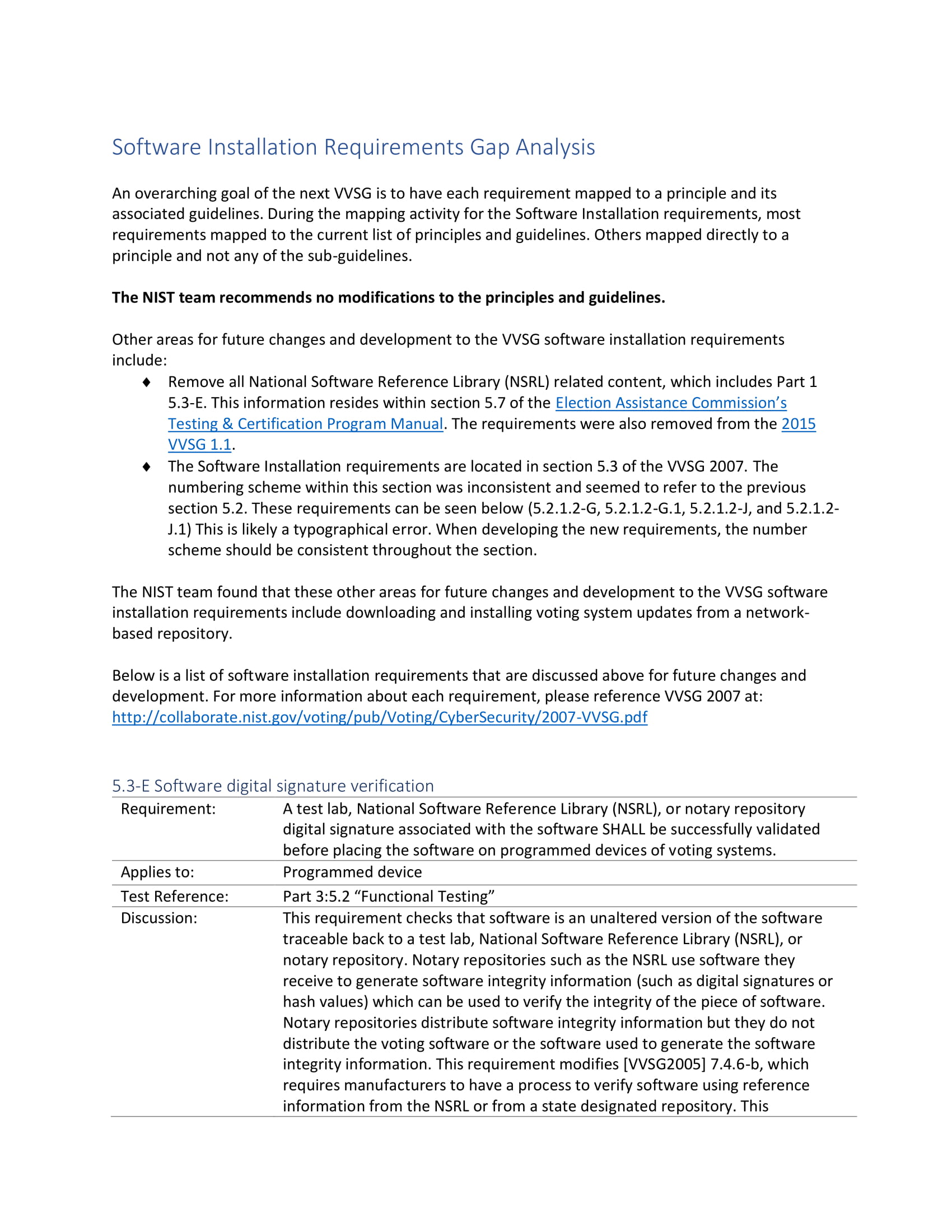 collaborate.nist.gov
collaborate.nist.govSoftware Network Gap Analysis Example
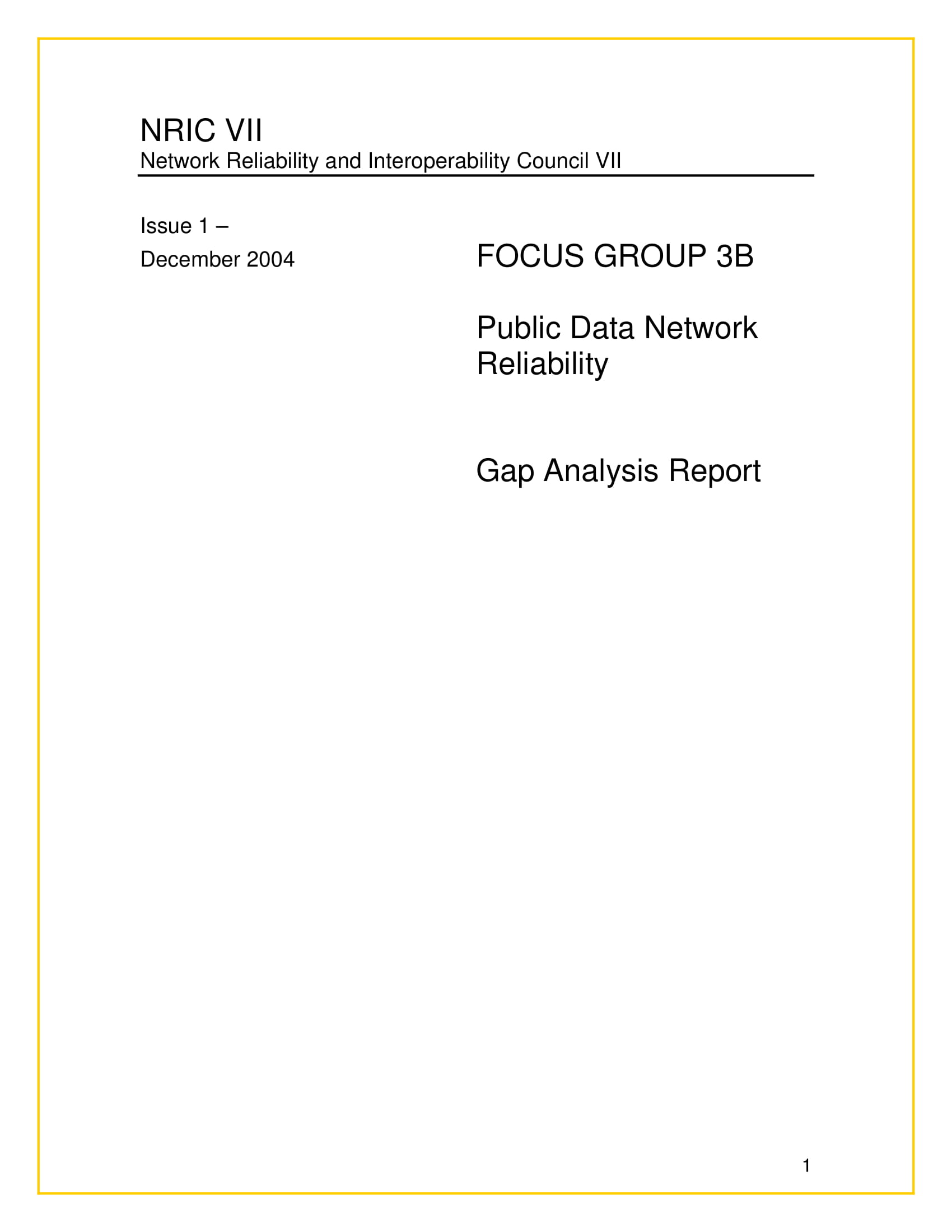 atis.org
atis.orgSoftware Process Gap Analysis Example
 repositorio-aberto.up.pt
repositorio-aberto.up.ptSoftware Program Gap Analysis Report Example
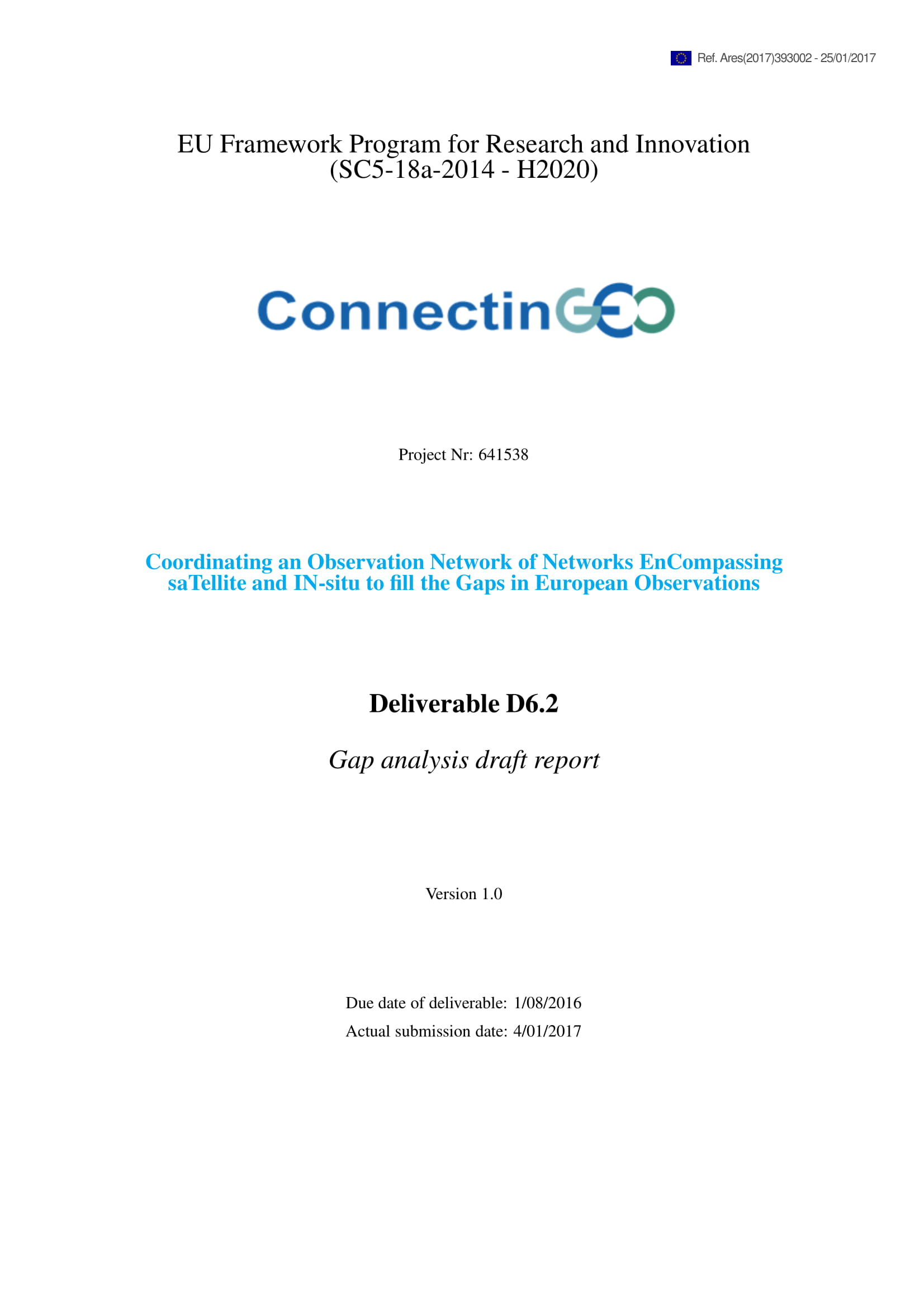 ddd.uab.cat
ddd.uab.catSoftware Quality Assurance Gap Analysis Example
 energy.gov
energy.govHow to Perform a Gap Analysis
Though there may not be a standard process in carrying out a gap analysis, as it is usually tailored according to the needs of a particular business, there are few guidelines as to how you can conduct an extensive gap analysis to achieve valuable results:
1. Select an area to focus on.
The first thing you would need to do is to find out where to focus on during the analysis. Say for instance, when conducting a product gap analysis, you need to measure the difference between a consumer’s expected quality level for a certain merchandise and the actual quality level it possesses.
Whether it’s from finance, product quality, or marketing, you must pick a specific problem to dig into deeper. Being very particular proves to be an advantage when it comes to doing a gap analysis.
2. Identify your goals.
Now that you know which area to focus on, goal-setting should be the next step on your list. Having a target or a goal will keep you focused throughout the process to ensure that your team is moving toward the right direction. You have to make sure that these goals are SMART, which means they need to be specific, measurable, attainable, realistic, and timely. A SMART goal, that is also aligned with your business goals, will help you define the future state of your organization or project.
3. Determine the current state you are in.
Before you can take a step forward, you have to take good look at where you are standing now. In this step, viewing the current state of things from the right angle is critical to the analysis.
There are several ways to do this. For one, you can look into the reports or process documentations possessed by your team. You can also gather with other members of the department or company to brainstorm on present matters. Interviews with other project leaders, investors, and associates within the organization will also be useful. The main objective of this step is to gather as much information as possible to fully clarify how the business is performing at the moment.
4. Determine the future state of your situation.
Remember the goals that were defined in the second step? Accomplishing these goals will help you reach the destination you want the business to be in. So for this stage, all you would need to do is to simply specify what the parameters of the desired state of your business are.
5. Identify the gaps between them.
By understanding the attributes of your current and future state, it’s much easier to recognize what exactly is keeping you from reaching your goals.
Think about it this way. Islands are typically separated by a body of water. To get to the other side, people had to ride boats for them to travel in. But riding a boat takes time and energy, and it can only accommodate a limited capacity of people at a time. To solve this problem, people started building a bridge to connect the two islands together.
Similarly, once you have identified the gaps that were slowing you down, you can come up with the most efficient and effective solutions to solve them.
A gap analysis serves as a great way to figure out the framework of your next project or process refinement efforts. Though a gap analysis can be rather vague, business leaders must be willing to explore possibilities beyond what they see and choose solutions that can close the gap which prevents them from reaching their ideal state. So if you ever plan on applying this technique for software development, make sure you have the right documents ready and a good template in hand to manage a smooth and successful gap analysis.



